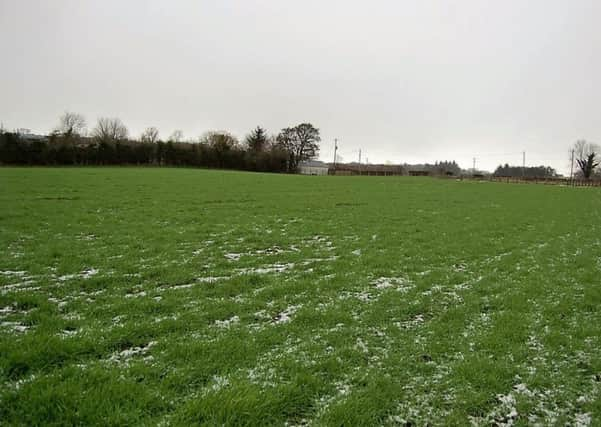DAERA Notes: Crops


What a difference a year makes! This time last year we were still enduring one of the most prolonged wet periods in recent times. Since then we have had one of the driest summers, followed by a drier than average winter. These provided a chance to remedy damage done to soils in previous wet years. The dry autumn also provided the opportunity to apply lime, phosphorus (P), potassium (K) and organic manures to more land than usual. The continuing good weather meant a larger area of winter crops was drilled in mostly excellent conditions, rolled where necessary and sprayed with herbicide. Mild weather and moderate rainfall since mean those crops have grown well through the winter and present different management challenges to last year in order to realise their full potential.
Fertiliser
A dry second half of February provided the opportunity to sow the first dressing of nitrogen (N) on winter barley. Where this hasn’t been possible aim for one third to half of total N during late tillering, as soon as conditions allow. For winter wheat a third of total N before the start of stem extension is sufficient, usually before the end of March. The exception to this is late drilled or thin wheat which should receive N earlier to encourage tillering.
Advertisement
Hide AdAdvertisement
Hide AdWhen applying the balance of N in later dressings consider there may be more residual soil N available to the crop this spring. Lower winter rainfall means less leaching of nutrients particularly N and sulphur from manures, as well as N applied to last year’s crop during dry weather which was never fully utilised. If you decide not to cut back N rates consider an additional growth regulator (PGR) now or higher PGR rates than usual as dense lush crops, combined with more available nitrogen, can lead to lodging later in the season.
Herbicide
Where autumn herbicide was not applied, prioritise winter barley as the few remaining grass weed herbicides effective for this crop only work on small grasses. The cut off dates for latest application are generally earlier than for winter wheat. Consult product labels carefully for latest application growth stages and dates.
Disease control
Due to the mild winter disease is easily visible in some earlier sown lush crops of wheat and barley. Certain varieties of barley have suffered particularly badly from mildew and would benefit from a T0 fungicide now to provide knockdown of existing disease and protection if the T1 spray is delayed. It is worth noting differences in disease levels between varieties as the armoury of fungicides will be reduced in years to come. In future we will rely more heavily on good varietal resistance for effective disease control.
Spring barley drilling
There is still time to soil sample fields before spreading slurry or farmyard manure. Soil sampling is money well spent as the analysis highlights the P and K status of soils and lime requirements.
Advertisement
Hide AdAdvertisement
Hide AdSowing should take place as soon as a good seedbed can be created. Aim for a seed rate between 350 and 400 grains per square metre. The lower rate should suffice for March sown barley drilled into a good seedbed, increasing the seed rate in poorer conditions such as cold, wet or heavy soils or if sowing later.
POTATOES
Seed preparation for planting
Attention to detail during the handling and preparation of seed before planting can result in an increased early tuber yield, while optimising fry colour and skin quality.
It is important to carefully check the seed as it arrives on farm and have a sample hot boxed to determine the presence of disease and overall sprouting vigour. Sprouting and chitting
Pre-sprouting, including tray and bag systems, must ensure adequate temperature control and ventilation (to control sprout growth and protect against frost) and light (to control sprout growth). Seed of early potato varieties should be set up in sprouting boxes. The aim of this is to promote apical dominance, producing one strong sprout per seed tuber, one stem and a small number of large tubers early. The opposite applies to maincrop potatoes where multiple sprouting is encouraged to produce many tubers which can increase in size over a longer growing season.
Mini-chitting
Advertisement
Hide AdAdvertisement
Hide AdThis system of seed preparation aims to produce seed tubers with sprouts no more than 2 mm long. Seed is stored at 3-4oC until close to planting time. The refrigeration unit is then turned off for seven to ten days to allow chitting to occur. Once sprouts of 1-2 mm have formed evenly, cool the seed down again to 3-4oC to prevent further sprout growth up to planting. Mini-chitting, whilst not having the benefits of earlier harvesting associated with pre-sprouted seed, produces a crop that emerges quickly and evenly.